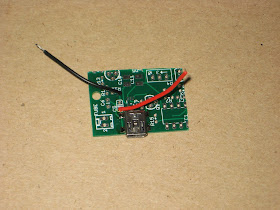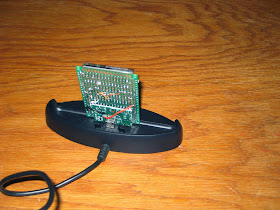The feature-rich open-source Geiger counter is offered as a kit by Medcom for the price of $450 (of which, $75 is donated to Safecast organization). I stubbornly insisted on sourcing the parts on my own, to save a few bucks and to get a closer look at the process. Let me tell you: this may be the only kit out there where the components bought individually are as expensive as the kit itself! Obviously, this kit was not designed to make a profit.
Here is a price breakdown (for non-believers):
- PCB (OSHPark) - $17 (3 for $52)
- Pelican 1010 box (store) - $13
- Arduino Fio - $25
- GPS module - $40
- OpenLog - $25
- OLED display - $25
- laser-cut plates - $25
- sensor LND7317 - $150
- iRover HV supply - $35
- LiPo battery - $10
- SD card - $10
- other electronic components - $5
- hardware (standoffs, screws etc) - $5
- shipping (on some of the items) - $30
-----------------------------
Total = $415
Since it took me so long to build it, I forgot a lot of details (I know, I should have logged impressions along the way; that's why it's called "web log").
But here are a few things I can still remember:
- the kit is pretty easy to build (once one has all components); geared towards the novice maker, the only challenge is to follow the assembly instructions, sometimes not very clear because it lacks details (for example, the spacers's sizes; although this does not matter for those who buy the kit); but it seems that the instructions are periodically updated and improved;
- the support and discussion forum is great; I got quick and helpful answers to all my questions;
- the display is 128x64 OLED, even though the resolution used is 128x32 (notice in the photo above that every other line is blank)
- the sketch can barely fit in the 30KB program space of Fio's ATmega328 (I actually may have commented out some functionality to make it fit);
- at the time I started, the Geiger sensor was not offered for sale (now it is); I bought it directly from Medcom, together with the high-voltage power module; they did not include the protection grid that comes with the kit;
- a big surprise was that the assembly fits perfectly in the Pelican box, without using the rubber lining (which I had cut and prepared according to the instructions anyway). When I say "perfectly" I mean nothing rattles inside when the box is shaken. Truly remarkable. For those interested, I used M3x10mm standoffs between the 1.5mm plates, with the bottom one separated with a set of 1mm washers (see photo below, taken before I installed the battery and the sensor).
- the toggle switch at the top would be a better candidate as power switch than the slide switch currently used (main reason being that the mechanical life of the NKK switch is longer than the life of the generic slide switch; it also feels more reliable); maybe a future version will swap those two switches;
- bluetooth could be used to connect to smart phone rather than the current cable solution; but that would require a larger sketch running on a bigger processor (ATmega1284 would be a good candidate);
- although the modules used come with headers, once installed, they cannot be removed (because they are soldered, for mechanical/space reasons; the only exception is the OLED display); removable modules would make the device easier to debug and fix (if necessary);
- overall, it was a good experience; I used some modules for the first time; I learned a few things (for example, how useful the double-sided foam tape can be); it opened perspectives to new ideas; thank you guys!














